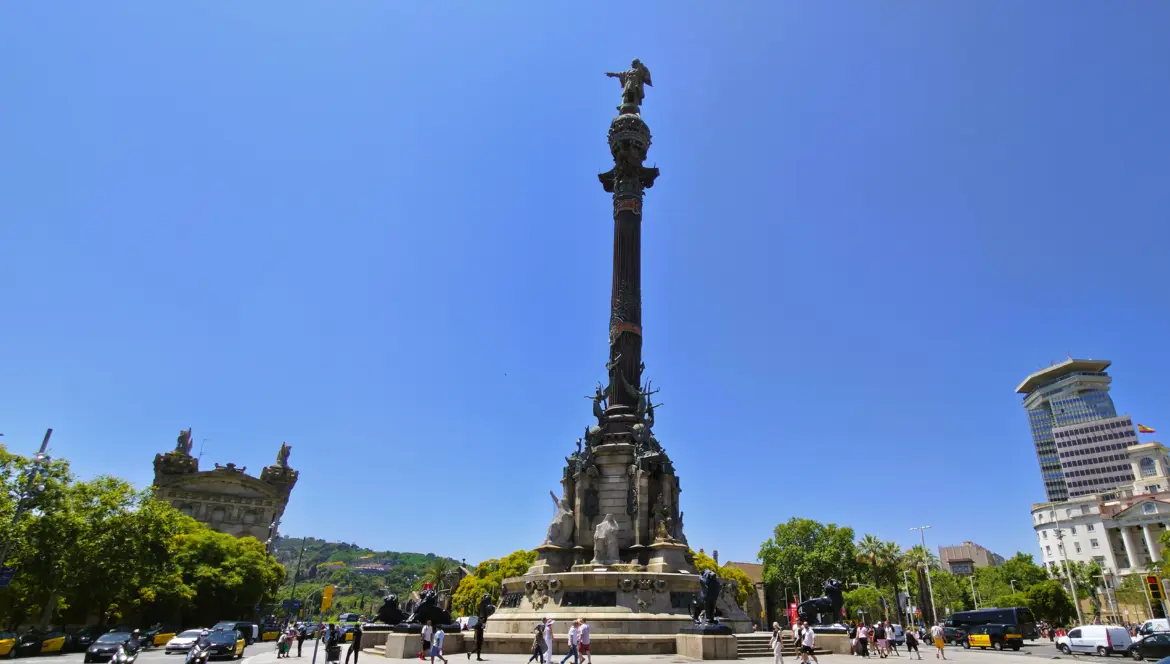Hola, my fellow travelers! The sea was calling. After spending the morning wandering through Montjuïc, I followed the curve of La Rambla down toward the water. Musicians strummed Spanish guitars beneath rustling palms, flower stalls spilled bursts of color onto the pavement, and the salty scent of the sea mingled with roasted chestnuts from a nearby cart. Then, just as the avenue opened into light, I saw it – a towering bronze column crowned with a figure pointing toward the horizon. The sunlight danced along its surface, turning iron to gold. It was the Monument a Colom (the Christopher Columbus Monument) standing proudly at the meeting point between La Rambla and Port Vell, where land, sea, and story converge.
A Monument to Exploration and Vision
Rising 60 meters (197 feet) into the sky, the Columbus Monument was built for the 1888 Universal Exposition, a world fair that transformed Barcelona and celebrated its rebirth as a maritime city. Designed by architect Gaietà Buïgas and sculpted by Rafael Atché, the monument became a symbol of ambition and renewal, a statement that Barcelona once again looked outward to the world.
Its cast-iron column was forged in sections across Catalonia’s industrial foundries, a proud achievement of 19th-century engineering. The base, carved from stone and adorned with bronze reliefs, tells stories of Columbus’s voyage, his presentation before the Catholic Monarchs, and allegories of the four continents, navigation, and Catalonia. Every detail feels deliberate, from the winged victories to the sculpted lions that guard the plinth.
Above them all stands Columbus, scroll in hand, gazing seaward. Contrary to popular legend, he isn’t pointing toward the Americas but rather south-southeast toward the sea, perhaps toward Africa or his birthplace of Genoa, though likely simply gesturing seaward.
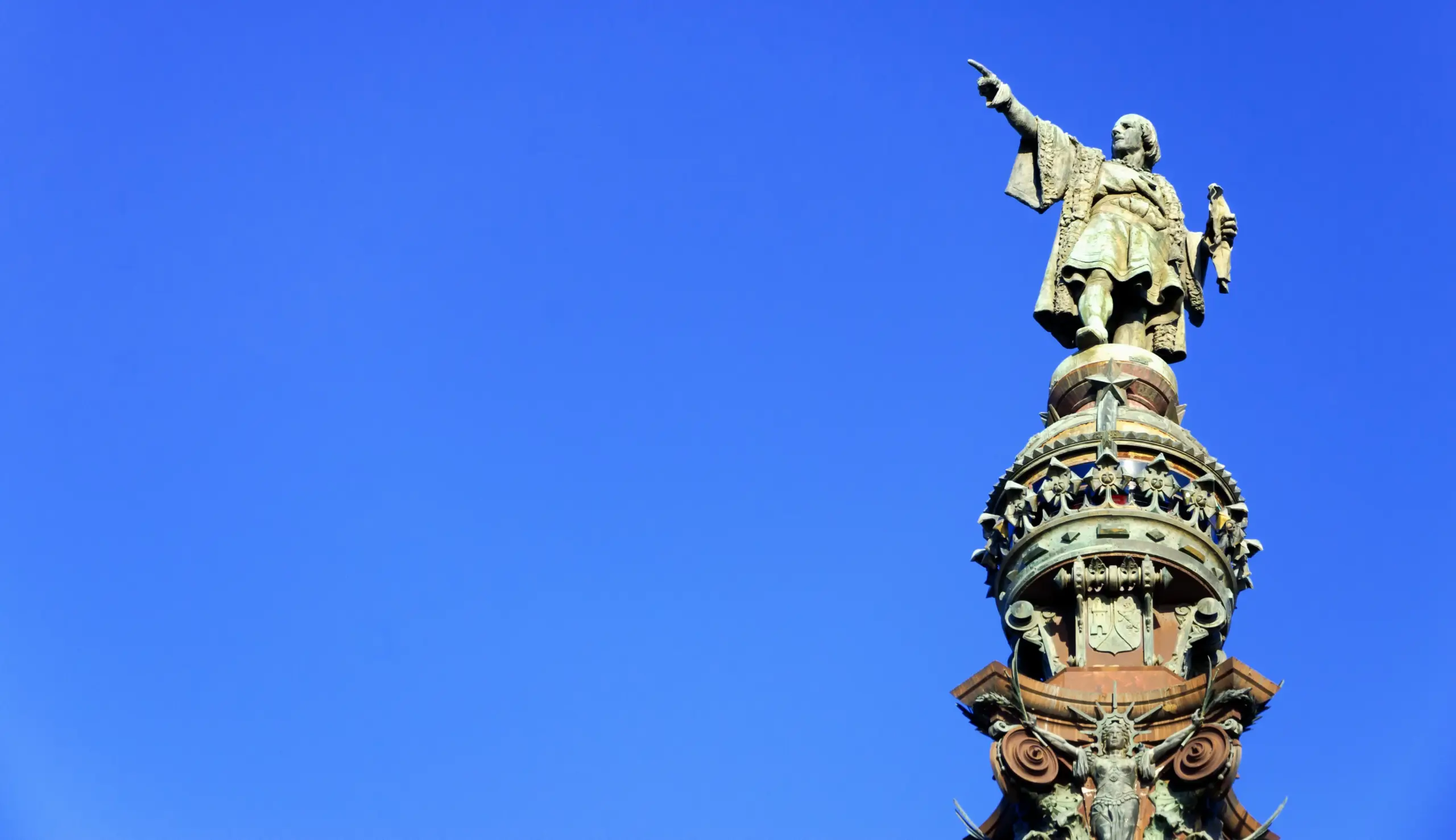
What You’ll See
1. The Column and Statue
Look up, and your eyes will follow the soaring Corinthian column until they find the bronze figure shimmering in the sunlight. His cloak ripples in the sea breeze, his face serene and unyielding. The monument’s verticality draws you in – it feels both grounded and weightless, anchored in stone yet dreaming of the horizon.
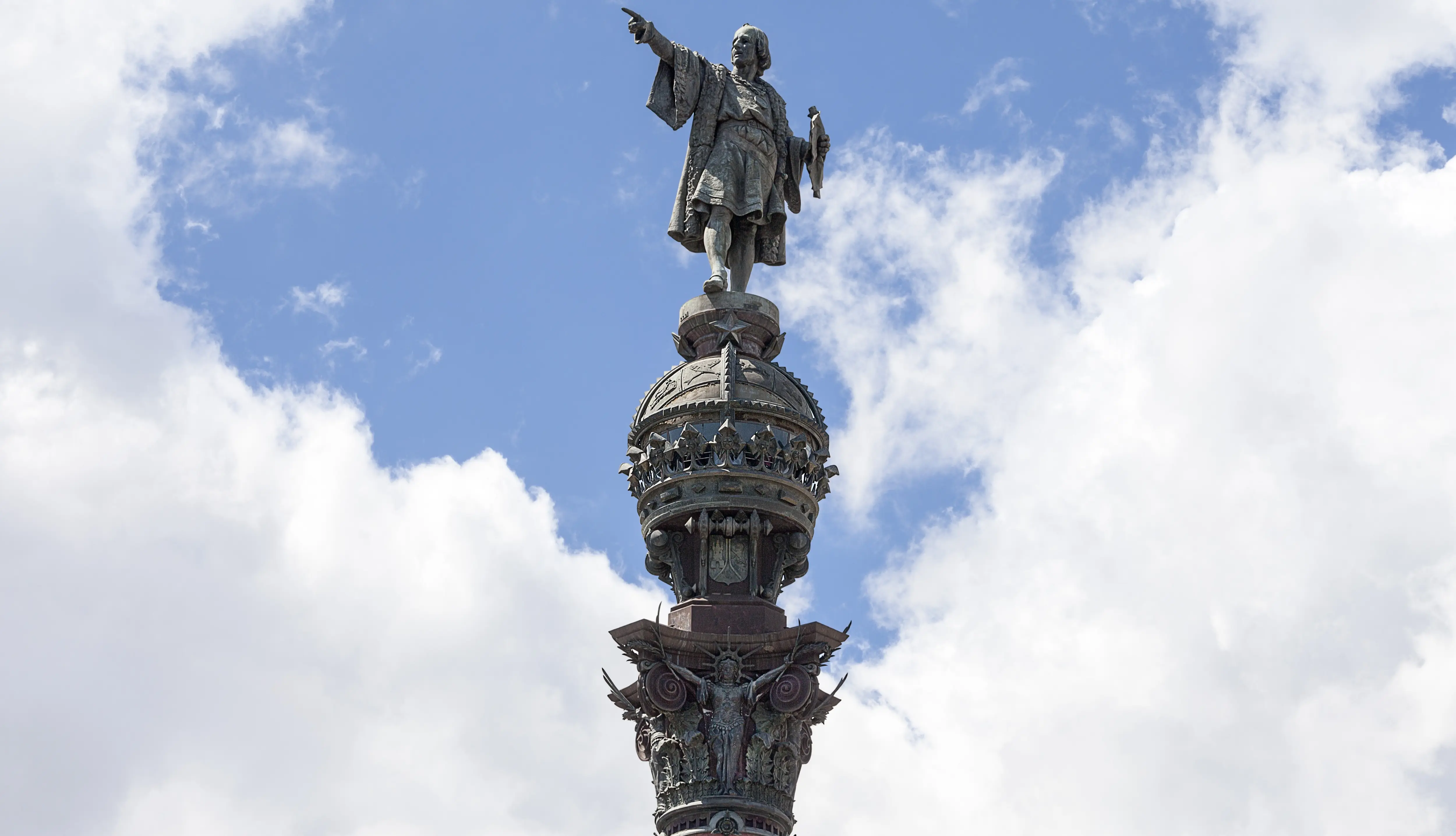
2. The Base Sculptures
Walk slowly around the base. You’ll find intricate reliefs depicting Columbus’ meeting with Queen Isabella and King Ferdinand, angels guiding ships through waves, and allegorical figures representing continents and virtues. Each carving captures the artistry of a city on the cusp of transformation, built just as the Catalan Modernism movement was beginning to emerge.
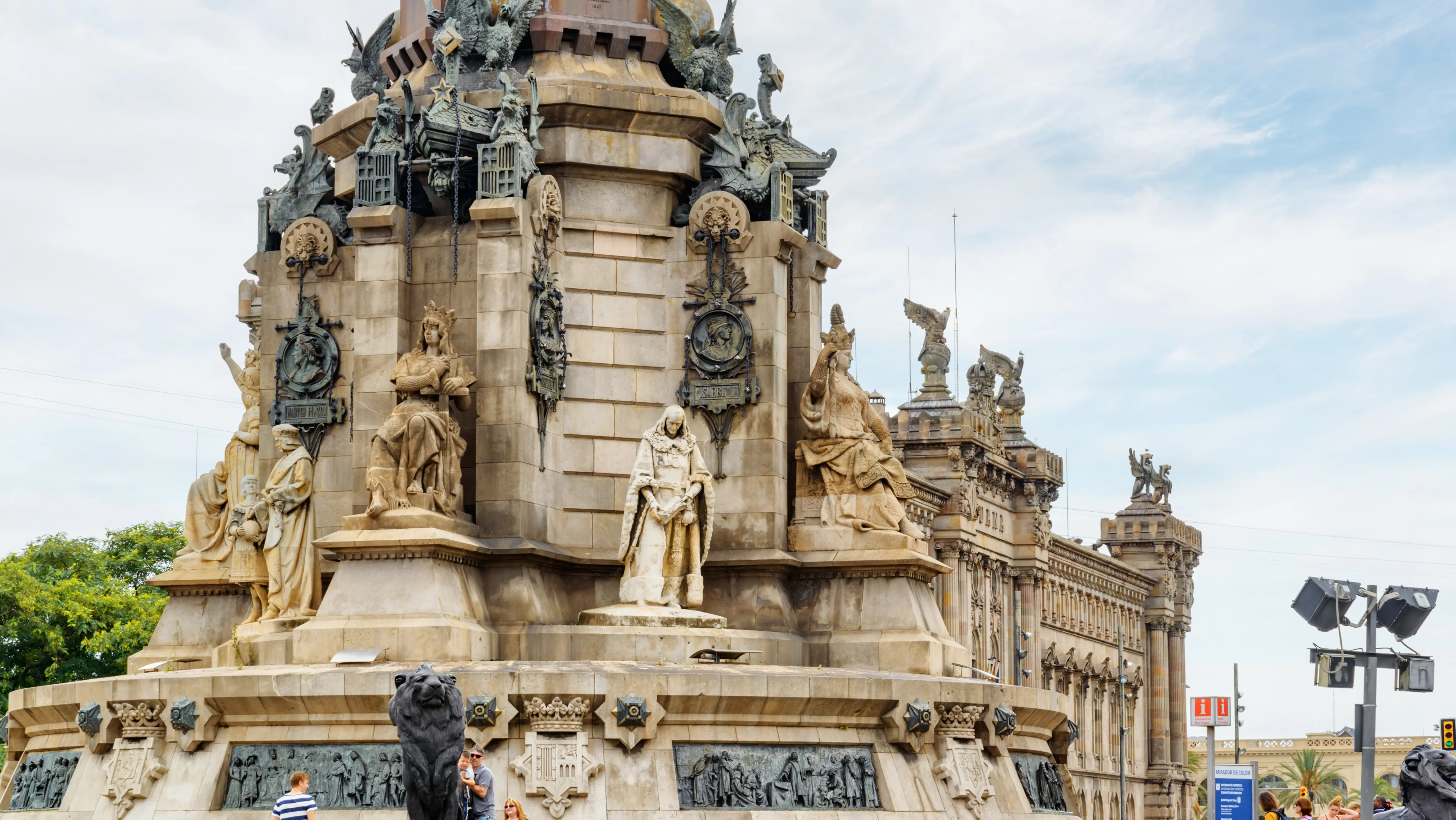
3. The Observation Deck
Few know that inside the column hides a narrow elevator, a small confined cabin that rises through the iron core to a circular platform just beneath Columbus’s feet. The ascent is quiet, and then, suddenly, the view opens in every direction: La Rambla unfurling inland like a green ribbon, Port Vell glimmering below, Montjuïc Hill watching from afar. The wind brushes your face, and for a moment, it’s as if you’re floating above the heart of Barcelona.
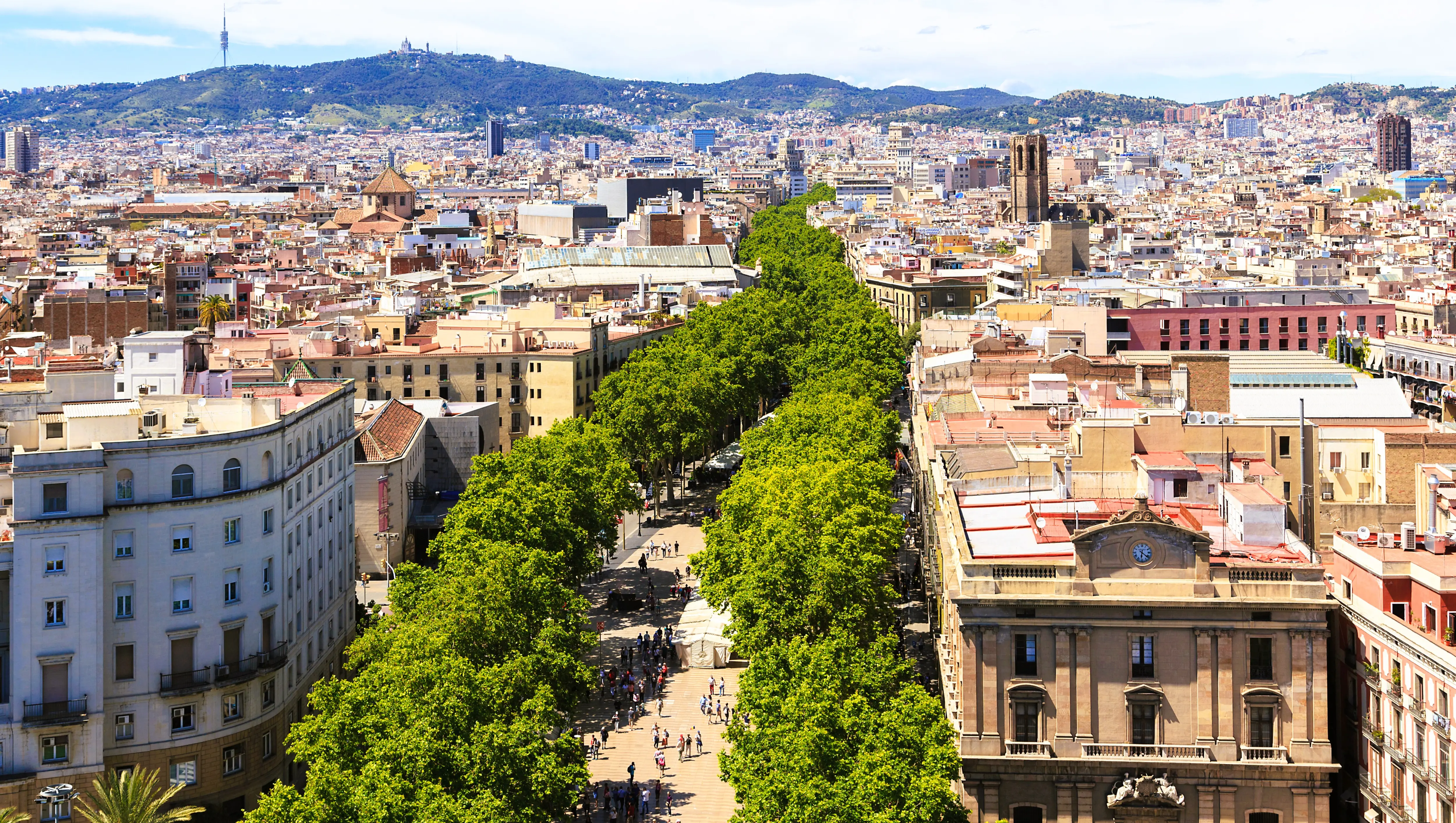
4. The Surroundings
The monument sits in Plaça del Portal de la Pau, a lively crossroads where buskers play, tourists pause for photos, and locals stroll toward the waterfront. Palm trees sway overhead, pigeons scatter across the square, and the masts of sailboats frame the skyline. It’s one of those places where Barcelona’s rhythm – history, music, and sea air – feels perfectly in sync.
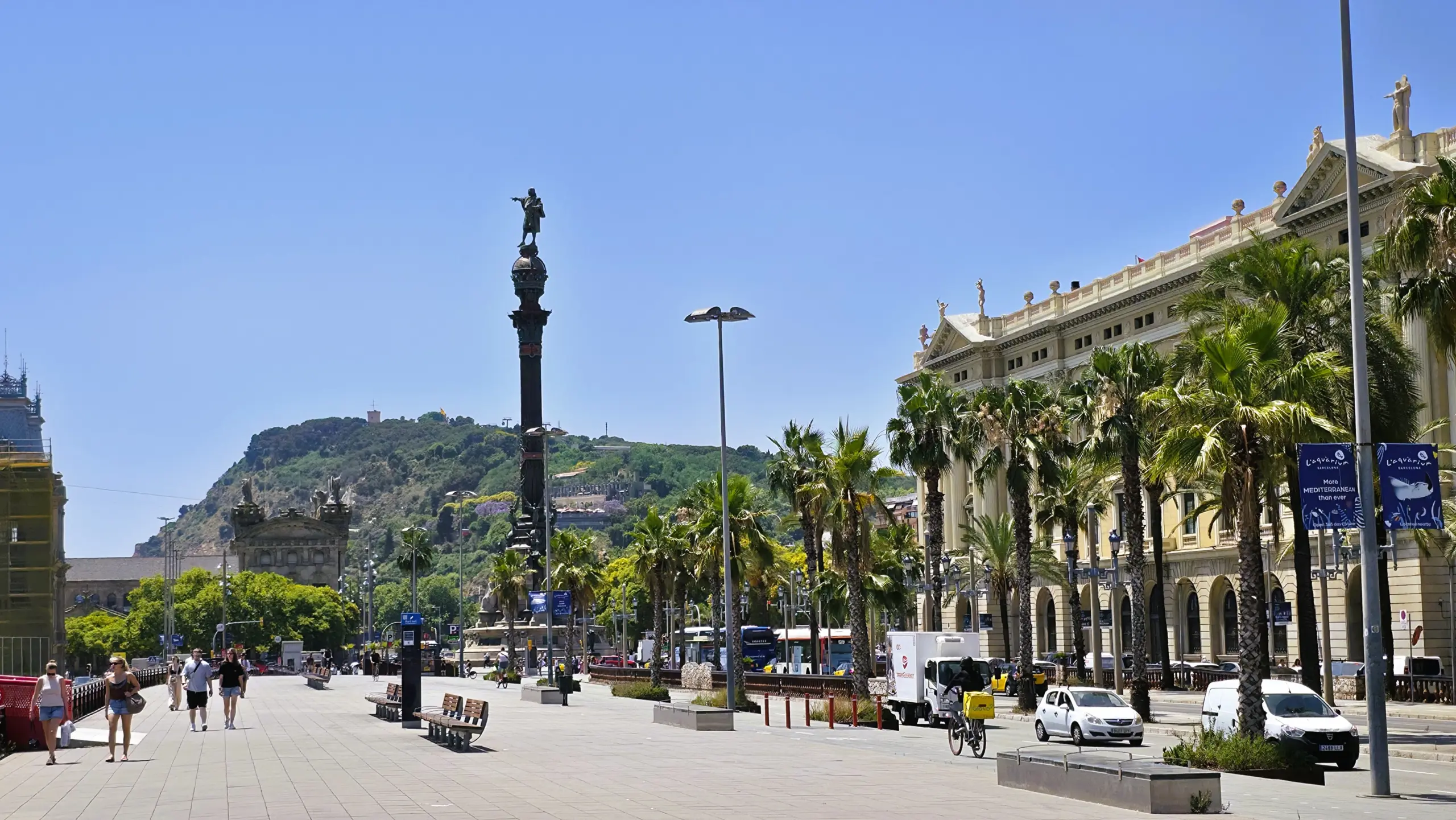
Through My Eyes
Standing beneath the column, I felt an almost meditative calm. Columbus may be a complex figure in history, but here, the monument speaks less about conquest and more about courage, the courage to explore the unknown. The bronze glowed amber as the afternoon sun dipped lower, casting long shadows on the square. I thought of all the travelers who, like Columbus, like me, had once stood here gazing at the sea, wondering what awaited beyond the horizon. For me, this place isn’t about the past. It’s about the eternal human impulse to move forward, to seek, to discover. That’s the heart of travel, and of BubblyLiving itself!
Practical Tips
- Location: Plaça del Portal de la Pau, where La Rambla meets Port Vell.
- Metro: L3 (Green Line) – Drassanes station opens directly onto the square.
- Hours: Usually 8:30 a.m.-2:30 p.m., varying seasonally.
- Admission: Approx. €8 for the elevator to the lookout deck.
- Best Time: Late afternoon or sunset for golden light over the harbor.
- Nearby: Enjoy vermut at a Port Vell terrace or visit the Maritime Museum next door.
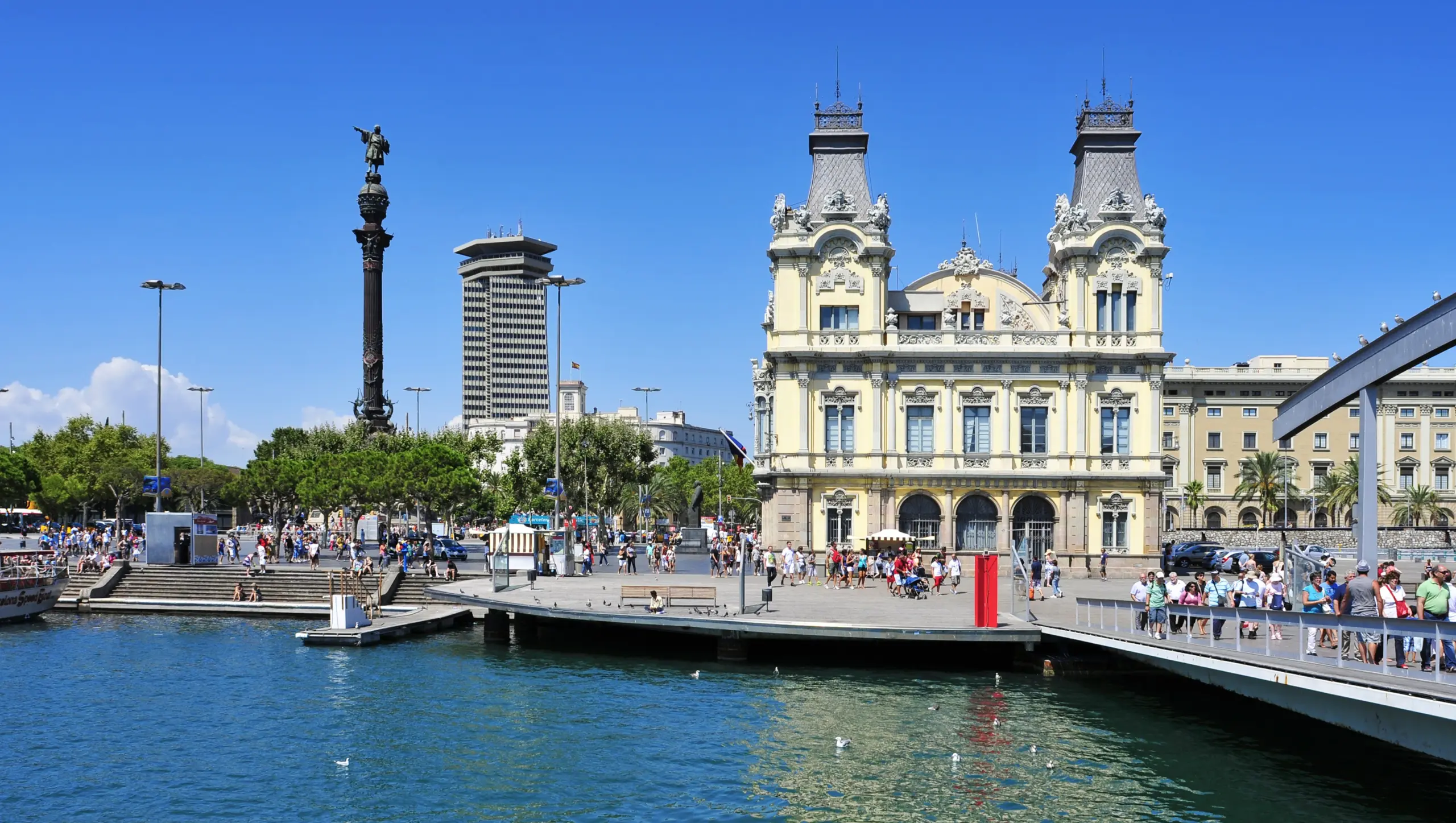
Final Thoughts
The Christopher Columbus Monument isn’t merely a landmark; it’s a mirror of Barcelona’s adventurous soul. From its 19th-century foundations to its panoramic views, it reminds you that this city has always lived in dialogue with the sea.
As twilight falls, the column catches the last threads of sunlight, and the bronze figure seems almost alive – arm outstretched, forever pointing toward what’s next. Standing there, with the sound of gulls overhead and the scent of salt in the air, I felt both grounded and free. Every journey, after all, begins with a glance toward the horizon.
Have you ever visited the Columbus Monument? Did you take the elevator to the top or watch the sunset from the square below? I’d love to hear your stories in the comments!
xoxo,
Bubbly🎈

